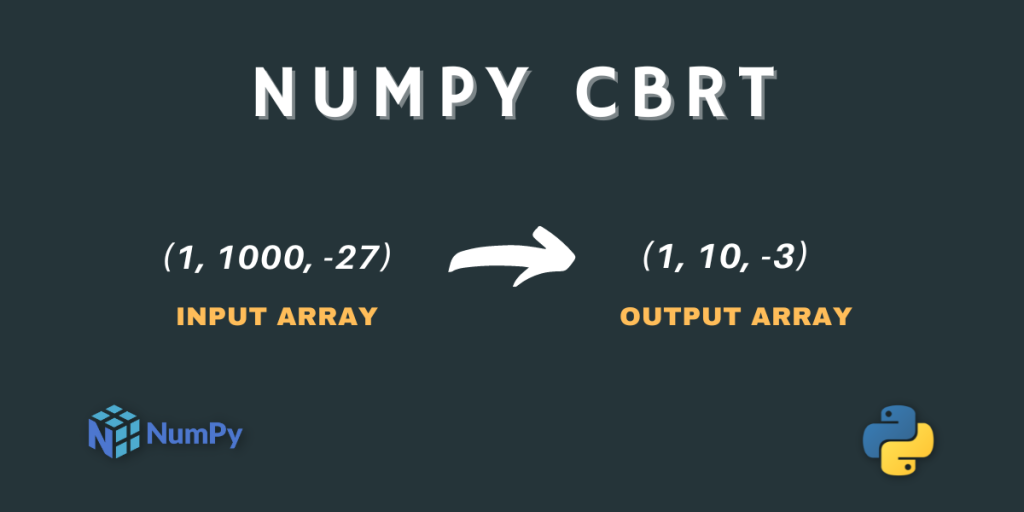Hello readers! Welcome to another tutorial on NumPy Mathematical Functions. In this tutorial, we will cover the NumPy Cuberoot function in detail along with a variety of examples.
Without any further due, let’s start.
Cube root Function – A Quick Overview
Let’s quickly revise the Cube root Function.
It is the 3rd root of a number. This means that if we multiply the value of the cube root of a number 3 times by itself then we would get the original number. For example, the cube root of 125 is 5, which implies that upon multiplying 5 three times by itself we get 125 as the result.
What is NumPy cbrt?
NumPy cbrt is one of the Mathematical Functions provided by the NumPy Library. It calculates the cube root (3rd root) of the input number.
Let’s look at the syntax of this function.
numpy.cbrt(input)
Here, the input can be a single number, a NumPy array of numbers as well as Complex Numbers.
Working with NumPy cbrt
That’s all about the syntax of the Function. Let’s now write code to understand the function better.
NumPy cbrt of Single number
import numpy as np
print("Cube root of 1 is :",np.cbrt(1))
print("Cube root of 125 is :",np.cbrt(125))
print("Cube root of 1024 is :",np.cbrt(1024))
print("Cube root of 27000 is :",np.cbrt(27000))
Output
Cube root of 1 is : 1.0
Cube root of 125 is : 5.0
Cube root of 1024 is : 10.079368399158984
Cube root of 27000 is : 30.0
The output are pretty obvious and easy to understand.
NumPy cbrt with NumPy array of Numbers
import numpy as np
a = np.array((1 , 1000 , -27 , -99))
print("Input Array:\n",a)
print("Cube root Values:\n",np.cbrt(a))
b = np.array((1024 , 216))
print("Input Array:\n",b)
print("Cube root Values:\n",np.cbrt(b))
Output
Input Array:
[ 1 1000 -27 -99]
Cube root Values:
[ 1. 10. -3. -4.62606501]
Input Array:
[1024 216]
Cube root Values:
[10.0793684 6. ]
Now, let’s see what happens when we pass a complex number as an input to the NumPy cbrt function.
NumPy cbrt of Complex Numbers
import numpy as np
print(np.cbrt(1+4j))
print(np.cbrt(2-5j))
Output
TypeError: ufunc 'cbrt' not supported for the input types, and the inputs could not be safely coerced to any supported types according to the casting rule ''safe''
From the above output, we can clearly understand that complex numbers cannot be passed as input to the NumPy cbrt function.
Let’s plot the NumPy cbrt function using Matplotlib Library.
Graphical Representation of NumPy cbrt
import numpy as np
import matplotlib.pyplot as plt
a = np.linspace(-10 , 10 , 20)
b = np.cbrt(a)
plt.plot(a , b , color = "green" , marker = "o")
plt.title("numpy.cbrt()")
plt.xlabel("X")
plt.ylabel("Y")
plt.show()
Output

That’s all about the NumPy cbrt function. Happy Learning 🙂
